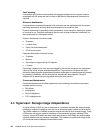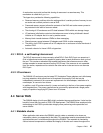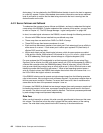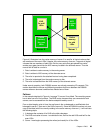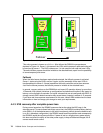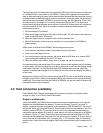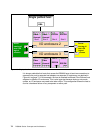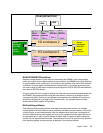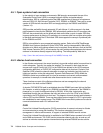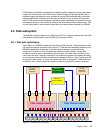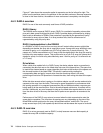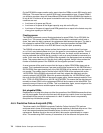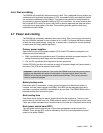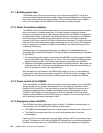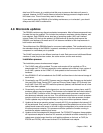74 DS8000 Series: Concepts and Architecture
4.5.1 Open systems host connection
In the majority of open systems environments, IBM strongly recommends the use of the
Subsystem Device Driver (SDD) to manage both path failover and preferred path
determination. SDD is a software product that IBM supplies free of charge to all customers
who use ESS 2105, SAN Volume Controller (SVC), DS6000, or DS8000. There will be a new
version of SDD that will also allow SDD to manage pathing to the DS6000 and DS8000
(Version 1.6).
SDD provides availability through automatic I/O path failover. If a failure occurs in the data
path between the host and the DS8000, SDD automatically switches the I/O to another path.
SDD will also automatically set the failed path back online after a repair is made. SDD also
improves performance by sharing I/O operations to a common disk over multiple active paths
to distribute and balance the I/O workload. SDD also supports the concept of preferred path
for the DS6000 and SVC.
SDD is not available for every supported operating system. Refer to the IBM TotalStorage
DS8000 Host Systems Attachment Guide, SC26-7628, and the interoperability Web site for
direction as to which multi-pathing software may be required. Some devices, such as the IBM
SAN Volume Controller (SVC), do not require any multi-pathing software because the internal
software in the device already supports multi-pathing. The interoperability Web site is:
http://www.ibm.com/servers/storage/disk/ds8000/interop.html
4.5.2 zSeries host connection
In the zSeries environment, the normal practice is to provide multiple paths from each host to
a disk subsystem. Typically, four paths are installed. The channels in each host that can
access each Logical Control Unit (LCU) in the DS8000 are defined in the HCD (hardware
configuration definition) or IOCDS (I/O configuration data set) for that host. Dynamic Path
Selection (DPS) allows the channel subsystem to select any available (non-busy) path to
initiate an operation to the disk subsystem. Dynamic Path Reconnect (DPR) allows the
DS8000 to select any available path to a host to reconnect and resume a disconnected
operation; for example, to transfer data after disconnection due to a cache miss.
These functions are part of the zSeries architecture and are managed by the channel
subsystem in the host and the DS8000.
A physical FICON/ESCON path is established when the DS8000 port sees light on the fiber
(for example, a cable is plugged in to a DS8000 host adapter, a processor or the DS8000 is
powered on, or a path is configured online by OS/390). At this time, logical paths are
established through the port between the host and some or all of the LCUs in the DS8000,
controlled by the HCD definition for that host. This happens for each physical path between a
zSeries CPU and the DS8000. There may be multiple system images in a CPU. Logical paths
are established for each system image. The DS8000 then knows which paths can be used to
communicate between each LCU and each host.
CUIR
Control Unit Initiated Reconfiguration (CUIR) prevents loss of access to volumes in zSeries
environments due to wrong path handling. This function automates channel path
management in zSeries environments, in support of selected DS8000 service actions.
Control Unit Initiated Reconfiguration is available for the DS8000 when operated in the z/OS
and z/VM® environments. The CUIR function automates channel path vary on and vary off
actions to minimize manual operator intervention during selected DS8000 service actions.



